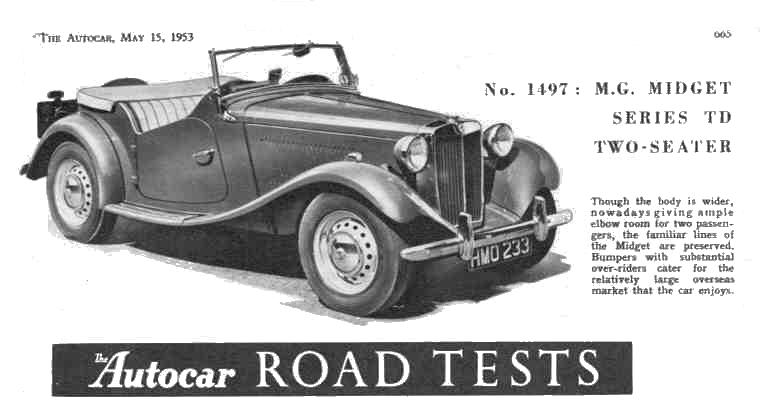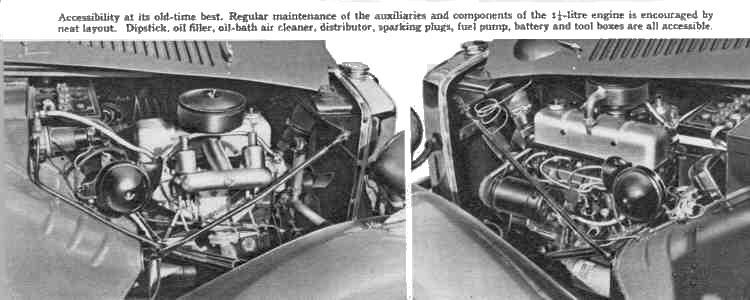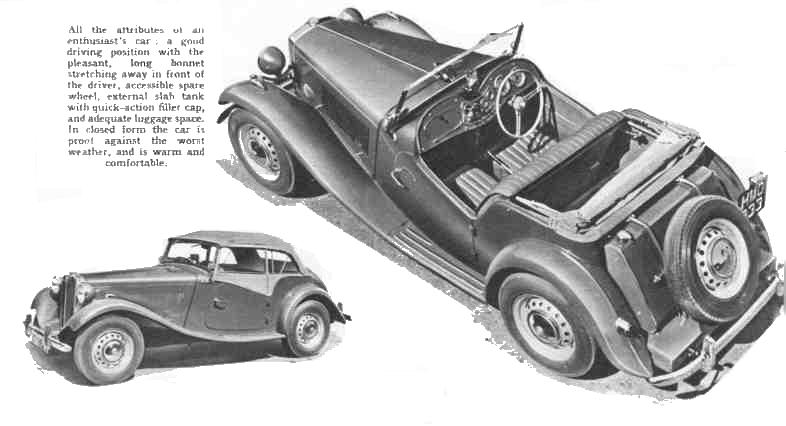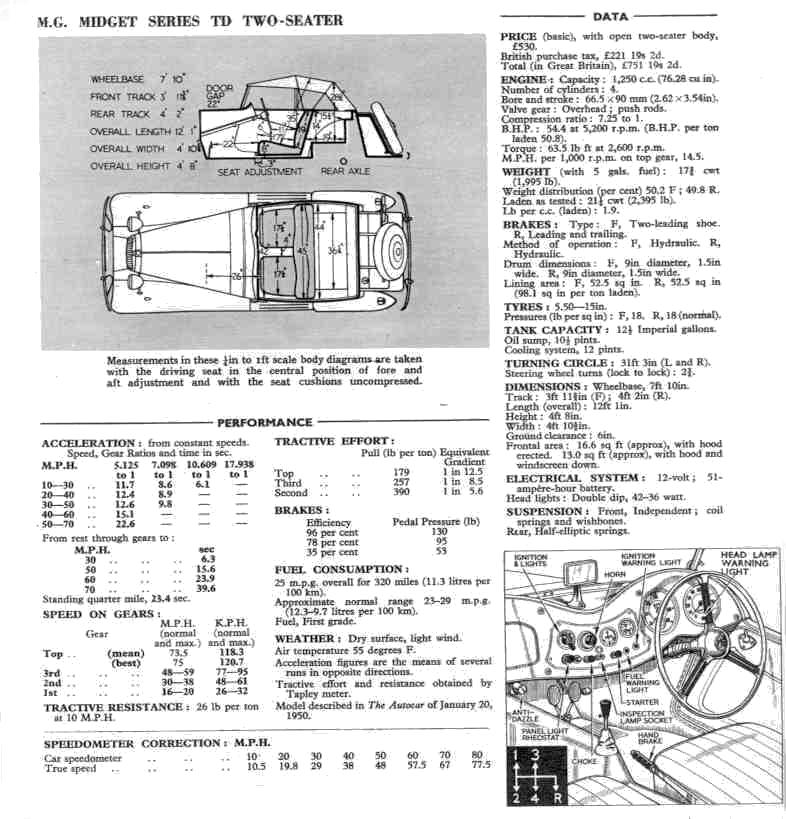ROAD TEST . . .
continued
and its short, remote control, central lever, are a joy to use-- to such an
extent that one tends to use third gear more -than one needs. For normal
purposes the synchromesh is adequate but, in the conditions of recording the
performance tests where full use of the performance was made, it was quite easy
to override it. In this connection, too, it was found that, in taking the
acceleration figures, when full throttle gear changes were made there was a
tendency for the clutch to spin. In a car of this type which is bound to be
used in competitions by many owners, stronger clutch springs would be an
advantage; this would be particularly necessary in a car which had been
subjected to the stage-by-stage tuning which can be carried out under the
guidance of the M.G. company and which was fully detailed, with its results, in
The Autocar of July 18 and 25, 1952.
The Lockheed hydraulic brakes, with two-leading
shoes at the front and leading and trailing shoes at the rear, are amply
adequate to the car's performance. Heavy pedal pressures are not required and,
as a test, the brakes will stop the car in a straight line from 50 m.p.h. with
the driver's hands off the wheel. There was no sign of fade in the arduous
conditions of the test, and after extensive use both while taking the
performance figures and during many miles of normal motoring, they did not
deteriorate nor did the pedal travel increase to any great extent.
Noise Levels
Mechanically, the engine is agreeably quiet and the exhaust note is subdued and
pleasant; even on the intermediate gears between high buildings there is no
back echo. Inevitably there is a certain amount of wind noise in an open car at
high speeds, but this is not worrying and conversation can be maintained
without the need to shout; gear noise is confined to a pleasant whine on the
intermediates. The engine starts easily from cold and the mixture control is
required only for the initial start. It is sensitive to fuel and, on a
low-grade diet, it pinks readily. At speeds not exceeding 50 m.p.h., maintained
over a long run, the fuel consumption worked out at a little under 30 m.p.g.
The driving position is good and the seats are
adjustable --together, not separately, because of the one-piece back rest--to
an extent to suit drivers of widely different heights; the steering column,
too, is adjustable for individual reach. Space is rather cramped round the
pedals and there is barely enough room for the left foot when it is not on the
clutch pedal. Both front wings are visible from the driving seat,
|
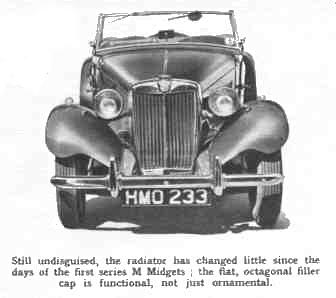
though the left wing view is in line with the driving mirror. the 5 in
speedometer and revolution counter dials are directly in front of the driver,
though it is felt that they could both be moved over to the right, as the
higher readings on the speedometer are hidden by the rim of the steering wheel.
On a panel in the centre of the facia are grouped the remaining instruments: a
combined radiator thermometer and oil pressure gauge, ammeter, horn button,
lighting and starter switches, mixture control rheostatically controlled facia
lighting switch, ignition warning light and a green light which warns the
driver when the level of fuel in the tank drops below 2½ gallons; a fuel
gauge is not fitted. There is an additional switch for a spot lamp if one
should be fitted, though such a lamp is not standard. There is a deep cupboard
in front of the passenger, though its lid is not lockable; upholstery and
interior trim are in leather and the seats are comfortable, well padded, and
give ample support to the extent that, after a long drive, no signs of
stiffness are felt. The windscreen wiper motor is placed at the top of the
fold-flat windscreen, in front of the passenger, and the twin blades clear a
wide area of the screen. At high speeds, with the blades in the parked
position, and occasionally when they are in operation, the blade on the driving
side disappeared above the screen; a stop to prevent this would be valuable.
The weather equipment, once in position, is
excellent and free from draughts and rattles, and the side screens we rigid and
fit well; soon after raising the hood the interior becomes almost as warm and
comfortable as that of a convertible. At high speeds the canvas of the hood
vibrates and produces a fair amount of noise, but the side screens remain well
|
